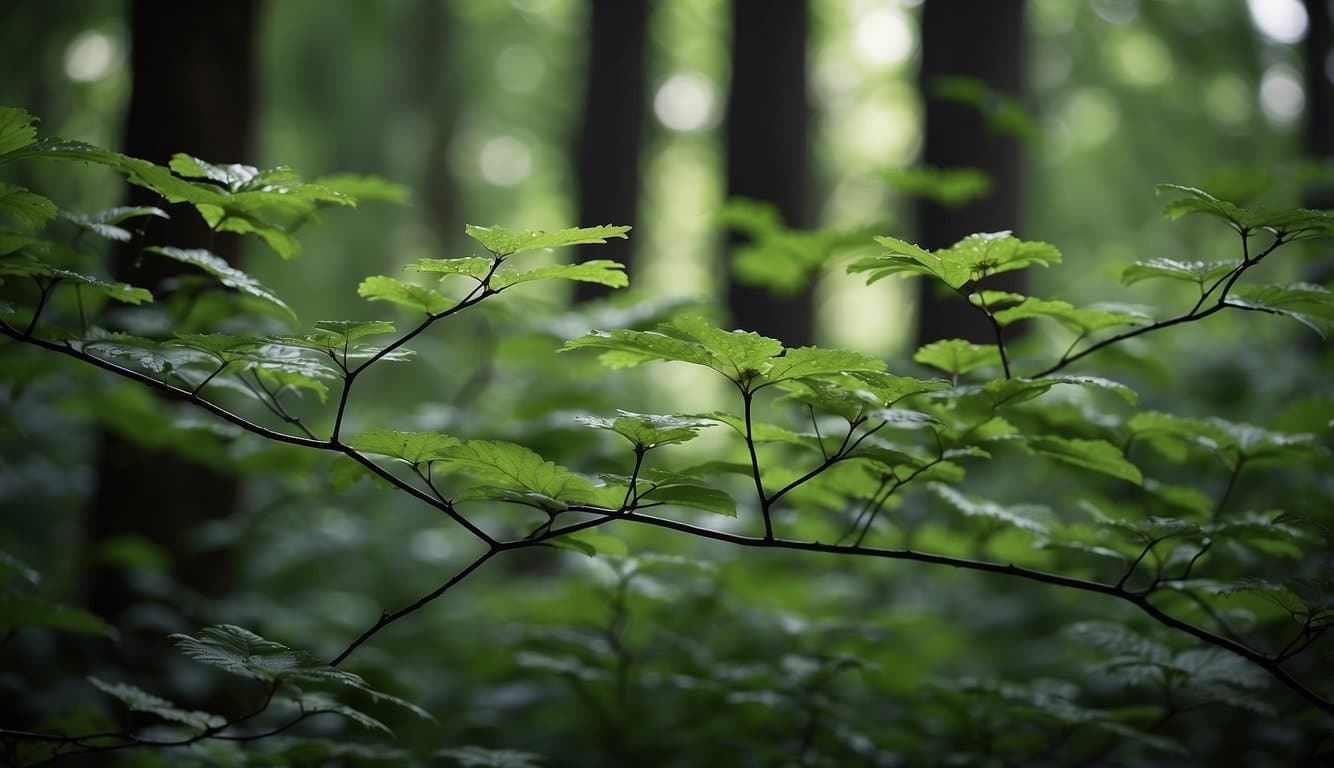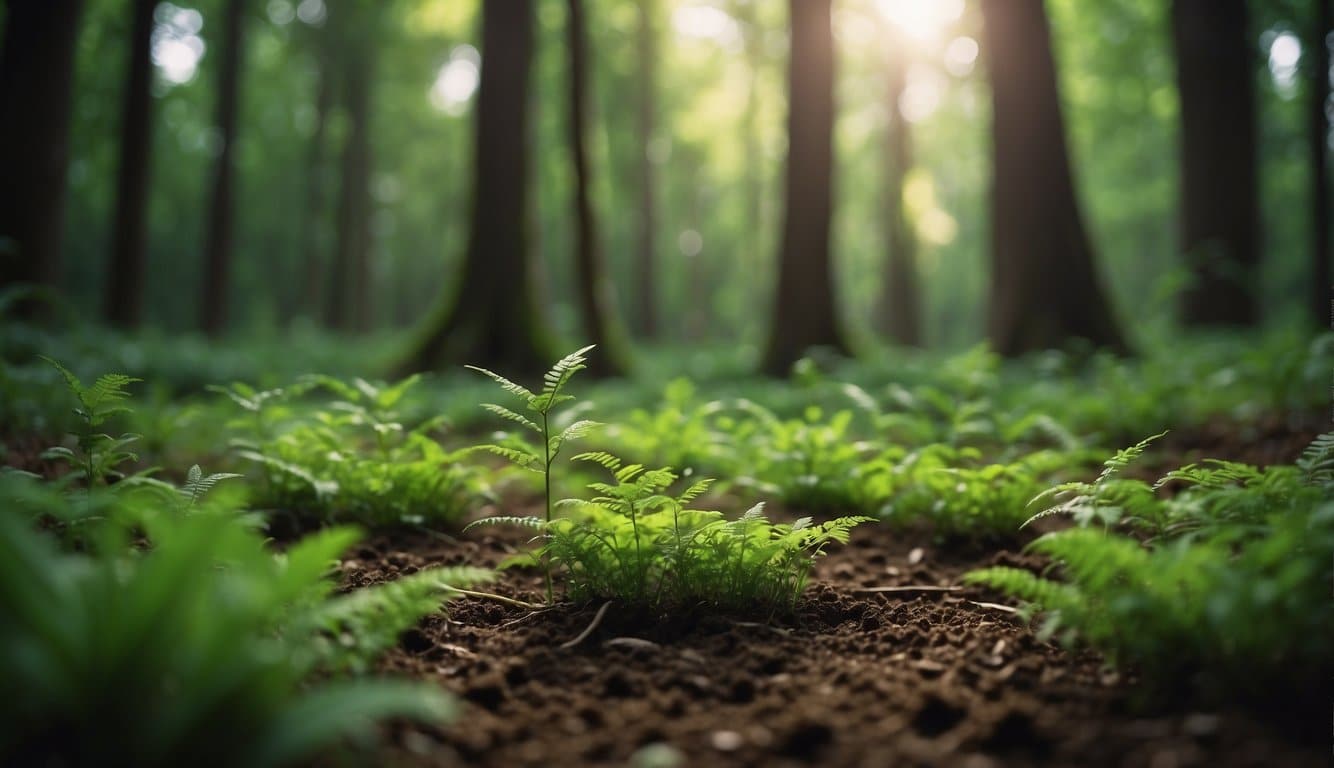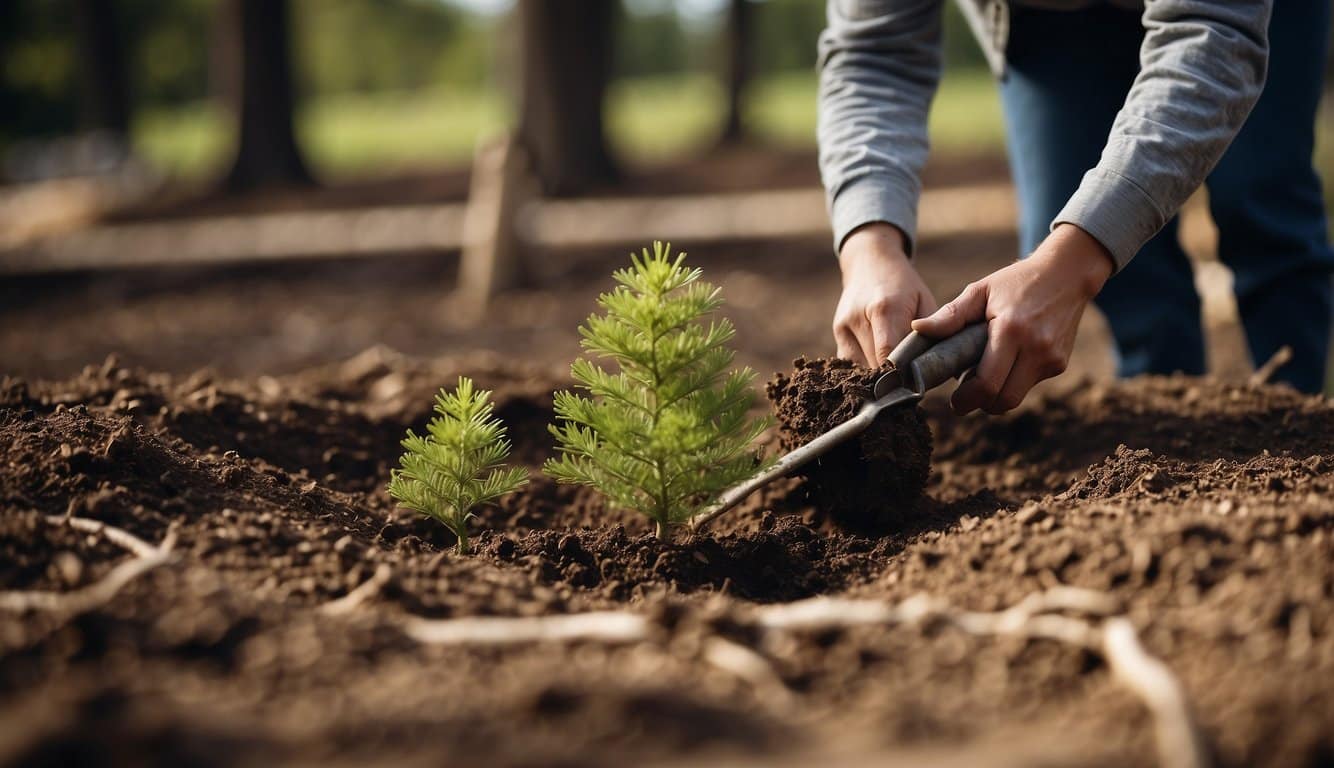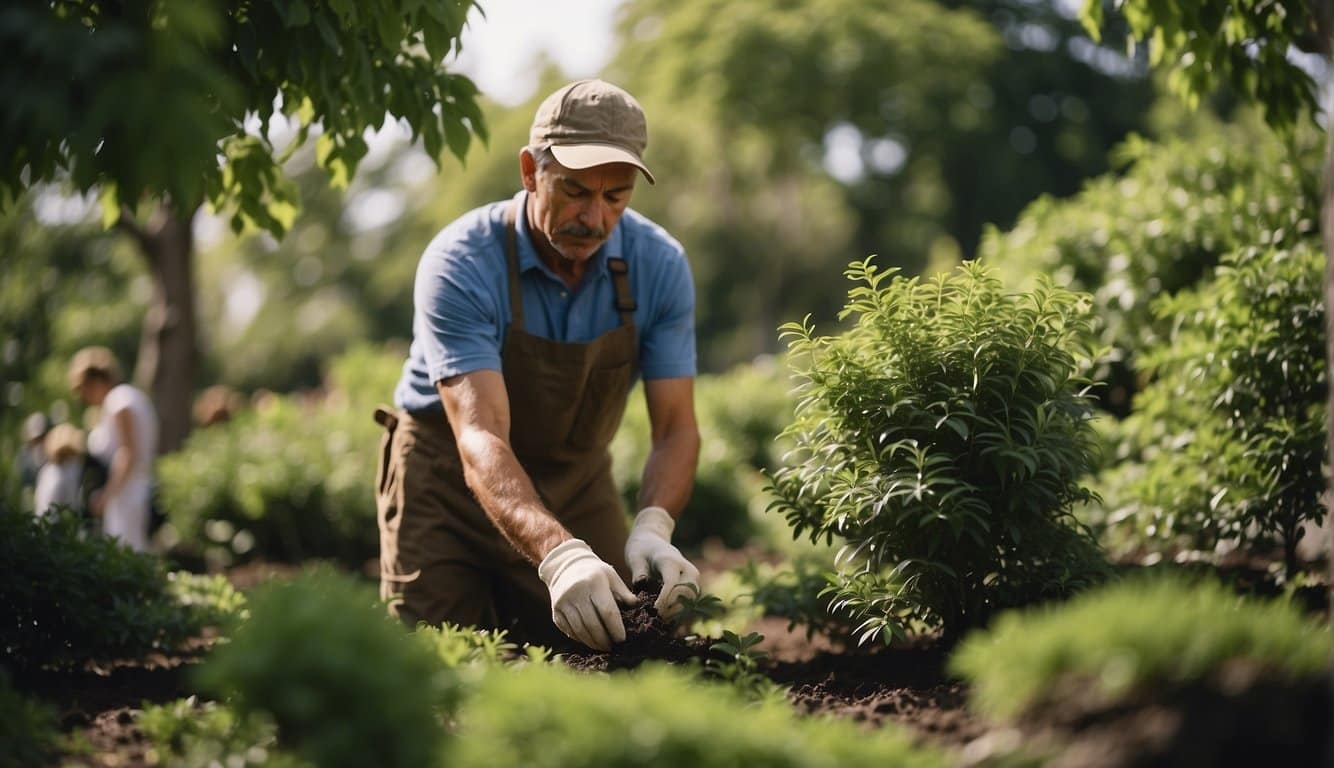Acid-loving trees are a unique group of arboreal species that thrive in soils with lower pH levels, typically below 6.5. These trees often possess certain evolutionary adaptations that allow them to flourish in environments where other plants may struggle.
For gardeners and landscapers with naturally acidic soils, these types of trees can offer a beautiful and practical solution for cultivating a healthy and diverse garden ecosystem.
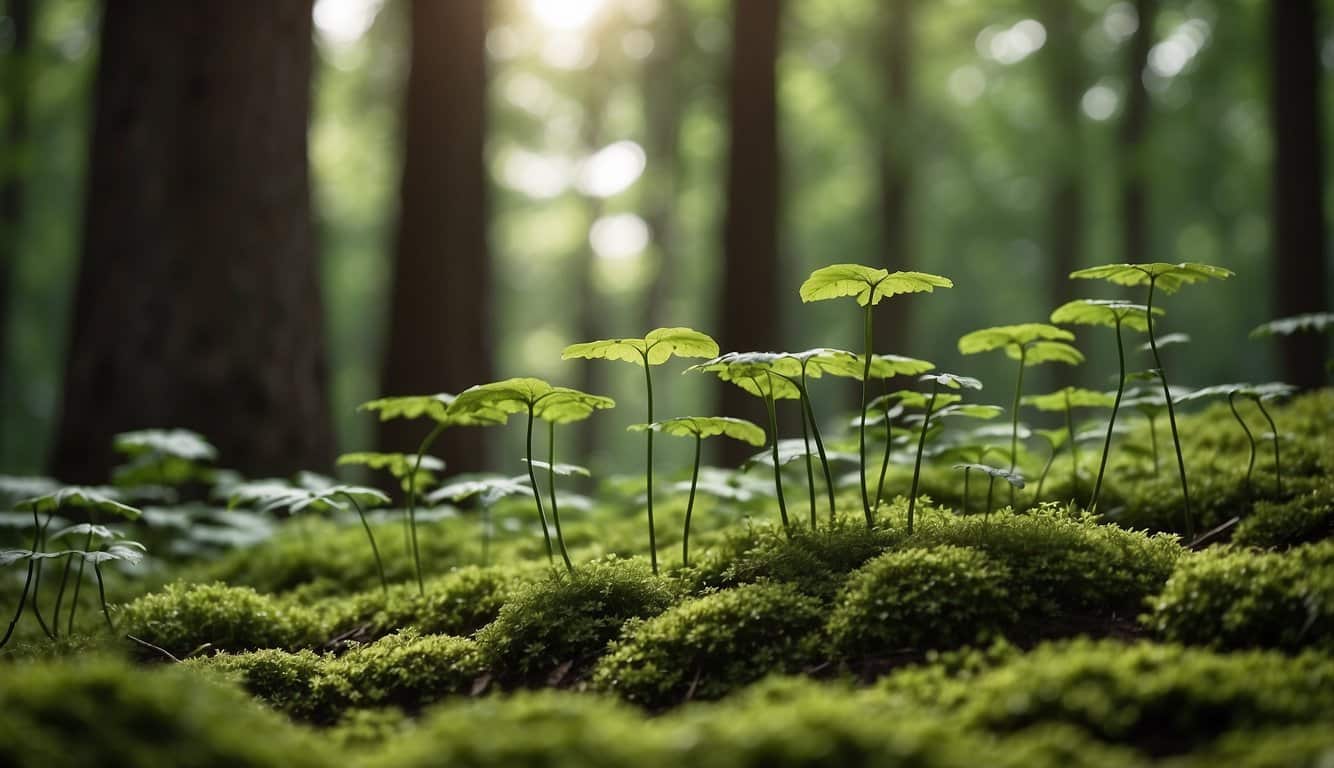
The preference for acidic soil doesn’t limit these trees to a narrow range; in fact, there are numerous species that display impressive versatility and beauty.
Among those favored for acidic conditions are beech trees, which can grow to impressive heights and offer a dense canopy of foliage that shifts from a vibrant spring green to a rich, mature hue as the seasons progress.
Their robust root systems and capacity to thrive in acid-rich soils make them an excellent choice for compatible landscapes.
Acid-Loving Trees Quick Table
| Tree Species | Soil pH Range | U.S. Climate Zone | Bark Description | Foliage | Additional Notes |
|---|---|---|---|---|---|
| Eastern White Pine (Pinus strobus) | 4.5 – 6.0 | 3-8 | Smooth, gray, becoming deeply fissured with age | Long, slender, blue-green needles | Fast-growing, used for timber |
| American Holly (Ilex opaca) | 4.5 – 6.0 | 5-9 | Smooth, light gray | Dark green, spiny leaves; red berries in winter | Evergreen, popular for holiday decorations |
| Rhododendron (Rhododendron spp.) | 4.5 – 6.0 | 4-8 | Often smooth, can be scaly or peeling | Large, leathery leaves, evergreen or deciduous varieties | Large, showy spring flowers |
| Blueberry (Vaccinium corymbosum) | 4.0 – 5.5 | 3-7 | Smooth, greenish to reddish | Oval, green leaves turning red in fall | Edible fruits, popular for landscaping |
| Red Maple (Acer rubrum) | 4.0 – 6.5 | 3-9 | Smooth when young, becoming cracked and ridged | Green leaves turning bright red in fall | Fast-growing, provides vibrant fall color |
| Azalea (Rhododendron spp.) | 4.5 – 6.0 | 5-9 | Varies, generally smooth and thin | Varies, often small, glossy leaves; deciduous or evergreen | Showy flowers in various colors |
| Sourwood (Oxydendrum arboreum) | 4.5 – 6.0 | 5-9 | Gray, deeply furrowed | Lanceolate, green leaves turn brilliant red in fall | White summer flowers, honey source |
| Pitch Pine (Pinus rigida) | 4.5 – 6.0 | 4-7 | Rough, deeply fissured, scaly | Stiff, yellow-green needles | Tolerant of poor soil conditions |
| Hemlock (Tsuga canadensis) | 4.0 – 6.0 | 3-7 | Rough, reddish-brown | Short, fine, dark green needles | Shade-tolerant, used in landscaping |
| Mountain Laurel (Kalmia latifolia) | 4.5 – 5.5 | 4-9 | Dark, reddish-brown, sometimes nearly black | Dark green, glossy leaves | Evergreen, produces clusters of pink to white flowers |
| Sweetbay Magnolia (Magnolia virginiana) | 5.0 – 6.5 | 5-9 | Smooth, gray | Bright green, silver underneath | Fragrant white flowers, semi-evergreen in warmer areas |
Key Takeaways
- Acid-loving trees are adapted to thrive in lower pH soils and contribute to biodiversity.
- Species like beech trees are examples of trees that prefer acidic conditions.
- Proper planting and maintenance of these trees ensure a healthy garden ecosystem.
Characteristics of Acid Loving Trees
Trees that thrive in acidic soils typically exhibit specific preferences and requirements from their environment.
Soil Preferences
Acid loving trees flourish in soil with a pH less than 7. These trees require a soil environment where the pH range ideally falls between 4.0 to 6.5.
- Optimal pH Range: 4.0 – 6.5
- Common Acidic Soil Trees: Beech (Fagus)
Nutritional Requirements
Trees suited to acidic soils have adapted to extract necessary nutrients in environments where others cannot.
They effectively utilize elements like iron and manganese, which are more soluble and readily available in lower pH soils. A deficiency in these nutrients can often lead to poor growth and chlorosis.
- Essential Nutrients: Iron (Fe), Manganese (Mn)
- Symptoms of Deficiency: Yellowing leaves (Chlorosis)
Watering Needs
Watering needs must be carefully managed, as excessive moisture can further acidify the soil, potentially leading to toxic levels of certain elements.
Regular but moderate watering sustains these trees without exacerbating soil acidity.
- Watering Strategy: Regular and moderate
- Avoid: Waterlogging and over-acidification
Common Acid Loving Trees
Trees that thrive in acidic soils often display vibrant colors and showy blooms, enriching gardens and landscapes with their distinctive characteristics.
Rhododendrons and Azaleas
Rhododendrons and Azaleas are celebrated for their stunning flower displays. They favor a pH range of 4.5 to 5.5.
While Rhododendrons are generally larger and evergreen, Azaleas can be deciduous or evergreen, adding seasonal variety to the garden.
Maples
Maples are versatile trees with some species like the Red Maple (Acer rubrum) preferring acidic conditions.
These trees often offer spectacular autumn foliage and can adapt to a range of soil types, although they are particularly vibrant when the soil pH is below 7.0.
Camellias
Camellias are evergreen shrubs or small trees that command attention with their glossy leaves and beautiful blooms.
They grow best in acidic soil with a pH of 5.5 to 6.5. Camellias require well-draining soil enriched with organic matter to flourish.
Magnolias
Magnolias have a majestic presence, thanks to their dramatic, large blossoms.
They thrive in a pH that is mildly acidic but can tolerate moderately acidic conditions. Gardeners prize these trees for their fragrant and sizeable spring-to-summer flowers.
Planting Acid Loving Trees
Successful cultivation of acid loving trees involves careful site selection, proper soil preparation, and employing the right planting techniques.
Site Selection
Acid loving trees thrive in environments that cater to their particular soil pH requirements.
Beeches, for instance, grow well in acidic soils and can reach heights of over 40 meters.
Gardeners should choose sites with naturally acidic soils or areas where the soil can be amended to achieve the desired pH levels.
Soil Preparation
Before planting, one must ensure the soil is within the pH range of 4.5 to 5.5, which is ideal for acid loving trees. This pH range allows for optimal nutrient absorption.
Soil acidity can be tested using pH test kits or meters.
If necessary, the application of soil amendments like sulfur or organic mulches can help to lower the soil pH.
Planting Techniques
When planting acid loving trees, it is essential to dig a hole that is as deep as the root ball and twice as wide. This allows the roots ample room to establish themselves.
To encourage growth, the tree should be watered thoroughly at the time of planting, and the soil should be mulched to retain moisture and regulate soil temperature.
Maintenance and Care
Proper maintenance and care are crucial for the health and growth of acid-loving trees. They have specific needs regarding fertilization, pruning, and pest and disease management to thrive in acidic soils.
Fertilization
Fertilizers for acid-loving trees should have a balance of nitrogen, phosphorus, and potassium, along with essential micronutrients suitable for acidic soil conditions.
It is recommended to use fertilizers labeled for acid-loving plants, typically marked as “for rhododendrons or evergreens.”
The best application times are in early spring and late summer, avoiding the peak of the summer heat.
- Spring Application:
- Apply a slow-release formula to promote healthy leaf and branch growth.
- Late Summer Application:
- A lower-nitrogen mix helps the tree prepare for dormancy.
Pruning
Pruning of acid-loving trees needs to be performed with care and at the correct time of year to prevent stress to the tree.
- Dead or Damaged Limbs: Remove these as they appear to prevent the spread of disease.
- Overgrown Branches: Trim in late winter or early spring, ensuring you make cuts just above a bud that faces outward from the center of the tree.
- Shaping: Light shaping can be done after the tree’s flowering period to maintain the desired structure without impeding growth.
Pest and Disease Management
Effective pest and disease management is vital to prevent infestations and illnesses that can be detrimental to acid-loving trees.
- Regular Inspection: Check for signs of pests or disease during each season.
- Appropriate Treatment: Use targeted treatments such as insecticidal soap for common pests like aphids and fungicides for diseases like root rot, ensuring the products are safe for acid-loving species.
- Cultural Practices: Keep the area around the trees free of debris and fallen leaves to reduce the likelihood of disease and pest issues. Maintain proper soil moisture levels to prevent stress that can increase susceptibility to problems.
Frequently Asked Questions
When cultivating a garden that includes acid-loving trees, it’s essential to understand their specific needs.
From the ideal fruit trees that thrive in low pH soils to the correct fertilizers for maintaining their health, knowing these details can lead to a flourishing arbor.
What types of fruit trees flourish in acidic soil conditions?
Fruit trees such as blueberries require acidic soil, with a preferred pH of 4.5 to 6.0. This environment helps them absorb nutrients more effectively and supports their growth.
Which fertilizers are best suited for acid-loving trees?
Fertilizers that are higher in sulfur and lower in lime are typically preferred for acid-loving trees, as sulfur can help lower the pH of the soil, catering to the trees’ needs without compromising their nutritional requirements.
Can you identify flowers that thrive in acidic soil environments?
Rhododendrons and azaleas are exemplary flowering plants that prosper in acidic conditions, often seeking a soil pH of 4.5 to 6.0. These species showcase vibrant blooms and are well-adapted to such environments.
Which tree species preferentially grow in highly acidic soils?
Certain maple species, like Japanese maples, favor acidic soil, although not all maples require it. They perform best when the soil pH is slightly lower than neutral.
Are there any native plants that exclusively seek out acidic soil?
While not all native plants are exclusive to acidic soils, many, such as holly bushes, thrive in these conditions, favoring soil pH values between 5.0 and 6.0 for optimal growth.
What are some indoor plants that require acidic soil for healthy growth?
The Bleeding Heart (Dicentra spectabilis) is an indoor plant that flourishes in acidic soil. They have a preference for a pH range from 6.0 to 7.0. Their unique heart-shaped blooms make them a popular choice for indoor gardeners.
